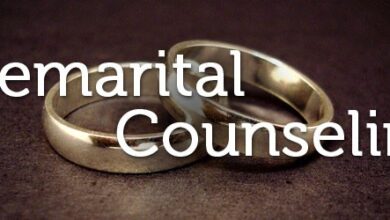How to Date Again After Emotional Burnout: A Gentle Roadmap to Love and Renewal

Introduction: When Your Heart Feels Heavy
There’s a unique kind of exhaustion that doesn’t come from running miles or pulling all-nighters. It’s emotional burnout—the deep weariness that sets in when you’ve given too much of yourself for too long. If you’ve poured endless time, trust, and energy into relationships that didn’t nurture you back, chances are you know the feeling.
Burnout doesn’t just happen in the office; it happens in love too. Maybe you spent years trying to fix a relationship that kept breaking. Maybe you tolerated toxic patterns, hoping things would improve. Or perhaps you went through a painful breakup that left your heart depleted. Whatever the reason, the thought of dating again can feel like another full-time job you don’t have the energy for.
Yet here’s the truth: love isn’t lost to you. It’s not gone forever. It’s waiting for you, patiently, as you heal. Dating again after emotional burnout is not about rushing into the next relationship—it’s about rediscovering your joy, restoring your energy, and reconnecting with yourself first. Only then can you welcome someone else into your life with balance, clarity, and peace.
This roadmap is designed to help you navigate the process with compassion. Step by step, you’ll learn how to heal, prepare, and reenter the dating world on your terms.
Step One: Recognize the Signs of Emotional Burnout
Dating while burned out is like running a marathon on an empty stomach—you’ll collapse before you even hit the halfway mark. The first step toward renewal is recognizing that you’re burned out in the first place.
Common signs you may be experiencing emotional burnout in relationships:
- Emotional numbness: Conversations feel like background noise; you struggle to connect.
- Irritability and impatience: Even small requests feel overwhelming.
- Avoidance of intimacy: You crave space more than closeness.
- Fear of rejection: Anxiety spikes at the thought of putting yourself out there again.
- Loss of excitement: The idea of dating feels like a chore rather than an adventure.
- Constant comparison: You measure every potential partner against painful past experiences.
These symptoms don’t mean you’re incapable of love. They mean you’re running on fumes. Recognizing this is liberating—it validates your need to pause and heal rather than pushing yourself back into the dating pool prematurely.
Step Two: Prioritize Healing Before Dating
Before stepping back into the world of swipes, dinners, and “getting to know you” conversations, you need to refill your emotional tank. Healing isn’t selfish—it’s preparation.
Ways to recharge your emotional batteries:
- Therapy or counseling: Talking to a professional provides tools to process pain and rebuild resilience.
- Restorative practices: Meditation, journaling, and breathwork help calm emotional turbulence.
- Creative outlets: Art, music, and writing reconnect you with joy outside of relationships.
- Healthy routines: Good sleep, balanced meals, and exercise stabilize mood and energy.
- Supportive relationships: Surround yourself with people who uplift rather than drain you.
According to the American Psychological Association, stress recovery is a layered process. Emotional rest is as vital as physical rest, and without it, you’ll find yourself repeating cycles of exhaustion.
Take this phase seriously. Healing is not a delay—it’s the foundation of future happiness.
Step Three: Shift From Survival Mode to Growth Mode
Burnout locks us into survival mode. In this state, we focus on avoiding pain rather than seeking joy. But healthy dating requires growth mode—where curiosity, openness, and self-awareness flourish.
Ask yourself these questions:
- Am I seeking a partner out of loneliness, or genuine desire for connection?
- Do I feel whole on my own, or am I hoping someone else will “complete” me?
- Am I ready to trust again, or am I bracing for heartbreak?
Moving into growth mode means reentering dating with clarity. You’re not desperate for a partner—you’re open to connection while secure in your individuality.
Step Four: Start Small and Lighthearted
Think of dating after burnout like going back to the gym after an injury. You wouldn’t start with heavy weights; you’d begin with light stretches. The same principle applies here.
Gentle ways to ease back in:
- Practice conversation skills with new people casually, without the pressure of romance.
- Go on short, low-stakes dates like coffee walks, trivia nights, or museum visits.
- Try group settings before one-on-one encounters for less intensity.
- Explore online dating at your own pace—browse, but don’t force matches.
Your first goal isn’t finding “the one.” It’s reminding yourself that meeting new people can be enjoyable. Keep it lighthearted. Focus on fun, not forever.
Step Five: Learn From Past Burnout Without Fear
Every past relationship, even the painful ones, carries lessons. Instead of framing them as failures, use them as guides.
Reflect on these questions:
- What patterns drained me emotionally?
- Did I silence my needs for the sake of peace?
- Which red flags did I ignore?
- What boundaries would protect me next time?
Reflection helps you shift from fear to wisdom. As the National Library of Medicine highlights, self-reflection enhances emotional resilience and reduces anxiety. It’s not about dwelling—it’s about learning.
Table: Burnout Dating vs. Balanced Dating
| Aspect | Burnout Dating (Unhealed) | Balanced Dating (Healed) |
|---|---|---|
| Energy Levels | Tired, easily drained | Steady, with space for joy |
| Boundaries | Weak, often ignored | Clear, firm, respected |
| Connection Style | Fearful, defensive | Open, curious, trusting |
| Expectations | Unrealistic, rushed | Grounded, patient, flexible |
| Emotional Safety | Drained after interactions | Uplifted and secure |
This table acts as a mirror. Where do you see yourself right now?
Step Six: Redefine What Dating Means to You
One of the reasons burnout happens is that we chase society’s script—swipe, date, marry—as though it’s a checklist. But what if dating meant something different for you?
Possible new definitions:
- Dating as exploration, not obligation.
- Meeting people to discover yourself, not just them.
- Focusing on aligned values over superficial traits.
- Prioritizing laughter, kindness, and calm over drama.
Dating should fit your life, not the other way around.
Step Seven: Practice Emotional Boundaries in Real Time
Even with preparation, dating can poke at old wounds. Boundaries protect you from slipping back into exhaustion.
Examples of healthy dating boundaries:
- Deciding how quickly you want to respond to texts.
- Limiting how many dates you accept in a month.
- Clearly communicating whether you want casual or serious connections.
- Leaving situations that make you feel unsafe or undervalued.
Remember: boundaries are not walls. They’re doors with locks—you control who enters and under what conditions.
Step Eight: Look for Red and Green Flags
Burnout can make us overly cautious, scanning for danger at every turn. While this protects you, don’t forget to spot the positive signs too.
- Red flags: emotional manipulation, inconsistent communication, lack of respect, dismissiveness.
- Green flags: honesty, consistency, emotional maturity, curiosity about your well-being.
Healthy dating balances both awareness and openness.
Step Nine: Go at Your Own Pace
One of the most liberating truths about dating after emotional burnout is this: there is no universal timeline. Society loves to push timelines on us—“you should be over it by now,” “don’t stay single too long,” or “get back out there quickly before you forget how to date.” These external pressures are not only unhelpful, they can be damaging. Healing from emotional exhaustion is a personal journey, and the pace must be set by you—not by well-meaning friends, family, or social expectations.
Why Pacing Matters
After burnout, rushing into dating can feel like forcing a wound to close before it’s fully healed. Sure, it might look okay on the surface, but deep down, it’s still raw and fragile. Dating too soon may lead to:
- Repetition of past mistakes, because you haven’t yet processed lessons from old relationships.
- Deeper exhaustion, as your emotional reserves get drained by new disappointments.
- Unhealthy attachments, where you seek validation rather than true connection.
Taking your time allows space for genuine readiness, so you step into dating with confidence instead of desperation.
Signs You’re Moving at the Right Pace
Not sure whether you’re moving too fast or too slow? Look for these signals:
- Excitement outweighs dread: The thought of meeting someone sparks curiosity, not panic.
- Self-contentment: You genuinely enjoy your own company, so you’re not dating to “fill a void.”
- Ability to say no: You feel secure enough to decline dates that don’t align with your energy.
- Openness without clinging: You welcome connection but don’t tie your self-worth to someone’s response.
These are green lights, suggesting you’re pacing yourself well.
Practical Tips to Control Your Pace
You don’t need to dive in headfirst. Think of dating as dipping your toes into water—test the temperature before swimming. Here’s how:
- Set boundaries on frequency: Start with one date a month or every two weeks until you feel more energized.
- Experiment safely: Try casual group activities before intense one-on-one dinners.
- Pause when needed: If dating starts to feel like a burden again, step back without guilt.
- Check in with yourself: After each interaction, ask, “Did this uplift me or drain me?”
Remember, the goal is not speed—it’s sustainability.
A Relatable Scenario
Take Mia, for example. After a painful breakup, her friends urged her to “get back out there” within weeks. She tried, but every date left her exhausted. When she slowed down—choosing to spend six months rebuilding confidence before dating again—she noticed a shift. By the time she met someone new, she wasn’t desperate for attention. She was secure, and that security transformed the relationship into something balanced and healthy.
The Danger of Comparison
It’s tempting to compare your progress with others. Maybe your friend started dating again after three months, while you still feel unsure after a year. But comparing timelines only fuels self-doubt. Everyone’s emotional recovery looks different. Some heal quickly, others need longer. Both paths are valid.
As long as you’re moving forward—whether in inches or miles—you’re making progress.
✨ Key Reminder: Going at your own pace isn’t a weakness. It’s a sign of strength. You’re respecting your healing, protecting your peace, and setting the foundation for a healthier love story.
Comparison only steals peace. Trust your timeline.
Step Ten: Embrace Vulnerability Without Losing Yourself
The most transformative part of dating after emotional burnout is realizing you can open your heart without losing your identity.
Practical tips:
- Share small pieces of yourself before bigger truths.
- Allow quirks and imperfections to show.
- Accept rejection as redirection, not failure.
- Stay anchored in your self-worth regardless of someone else’s interest.
Vulnerability is not weakness—it’s courage in motion.
Conclusion: Dating After Burnout Is Possible—and Beautiful
Dating again after emotional burnout may seem daunting, but it’s not a dead end. It’s a chance to rebuild differently. By healing first, setting boundaries, moving at your pace, and redefining what dating means to you, love becomes something to savor, not something to fear.
When you step back into dating after burnout, you do so as a wiser, stronger version of yourself. You’re not starting over—you’re starting better.
Love will come, but this time, it will meet you in a place of balance and peace.









